Expressive Watercolor Card – Free Video Tutorial

This week I have a video tutorial for you. We’ll paint an expressive watercolor card that connects several artistic approaches together.
Fine Art, Illustration, or Design?
Visual art is often divided into categories like fine art, illustration, and design. I am not a one-category artist, but interested in all of them. I need to do fine art to let go and feel free. Illustrating connects me with the outside world and other people. And I have started creating surface designs again because simplifying is a game that keeps fascinating me, and I love to develop products.
This week, let’s create a card – you could also say “a product.” It has a clear structure, so “a design,” but it can also be an illustration with a message. My card is about a house filled with plants, and I think I am illustrating my home. Visitors sometimes comment: “Wow, you have a lot of houseplants!” Almost every room in our house has plants, and their welfare constantly worries us, especially during winter when there’s less daylight.
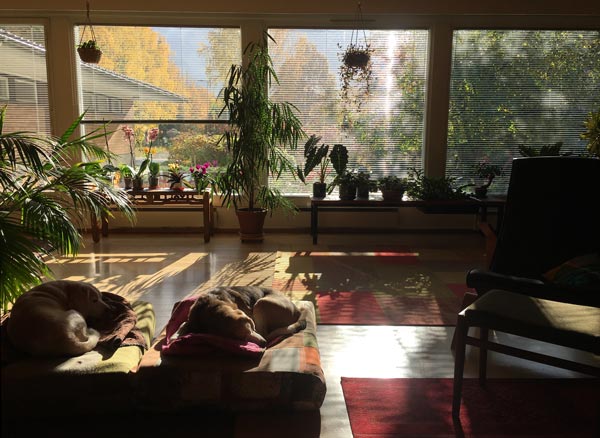
But this card is not an illustration at all when thinking about how it started. The way it’s created makes it fine art. I painted freely and didn’t have any pre-defined images or ideas for it. However, I had a method that can produce many kinds of images. So, the method gives practical guidelines for painting, but the result can be different each time.
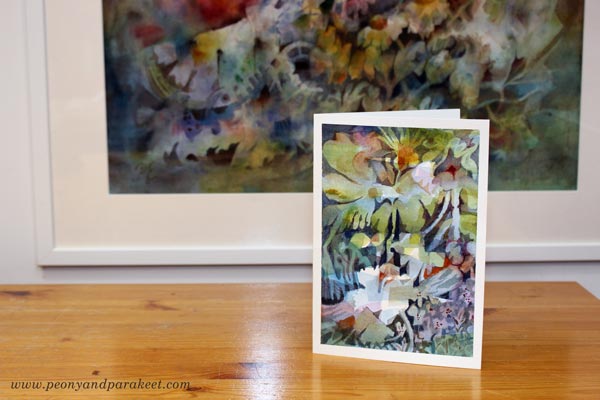
Expressive Watercolor Card – Paint With Me!
Watch the video and start painting!
In the video, I use the negative painting technique a lot. Even if you can use any technique that suits you, negative painting is the best technique when you want to make lines and shapes more elegant and the painting more finished. Dive deeper into this wonderful painting technique in the class Magical Forest.
Magical Forest – Dive Deeper into Expressive Watercolor Painting

Learn essential watercolor techniques like negative painting and layering, and express with light! In Magical Forest, we paint magical nature sceneries with flowers, trees, water, and fantasy.
Hop along! The class ends as late as at the end of April, and you will get the published lessons right after the registration. >> Sign up here!
5 Ways to Love Yourself When Painting
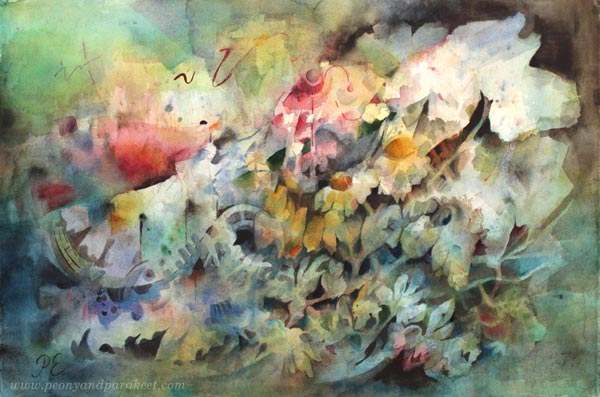
Here’s my recent watercolor painting. It’s called Icebreaker, and can I publicly say that I love it? Love, love, love. So this week, I daringly blog about how to selfishly love yourself when painting.
This is not my typical post. I would normally post things like “11 Ways to Make Your Painting More Abstract” or “7 Reasons Why Negative Painting is the Best Technique” or “3 Tips for Getting Closer to Your Style”. But after painting Icebreaker, I kind of melted. It became more true to me than ever before that we paint because we want this special kind of acceptance – the acceptance from ourselves.
When I whole-heartedly accepted what I had created, I didn’t just receive love from myself. I saw a long row of people congratulating me. All deceased, unfortunately, but still! There was my mother, saying that she knew I could do it. There was my father, looking away so that he could hide his smile. I saw my grandfather, a creative person I never met, congratulating me generously. And my dear aunt Rauha (which means Peace in English) was waving, looking just as lively and restlessly happy as she used to be. Now, this kind of love is what I want more and also spread more!
So this post is about turning your inner critic to your best fan. It’s not easy, and it may take like a lifetime, but it’s worth trying, so let’s begin!
1) Love Rises from the Mess
As a former engineer, I feel drawn to two-state things. Zero or one, yes or no, black or white, thick or thin, geometric or organic, the list is endless. But when painting, I like to be in the grey area, especially in the beginning. After the horrifying view of blank paper, my watercolors are sighing with relief: “She sprays and splashes so she must be having a good time.” And yes, I usually am.
But this mess is not just any mess to me. It’s a sign of hope. I hope to figure out what to do with it …
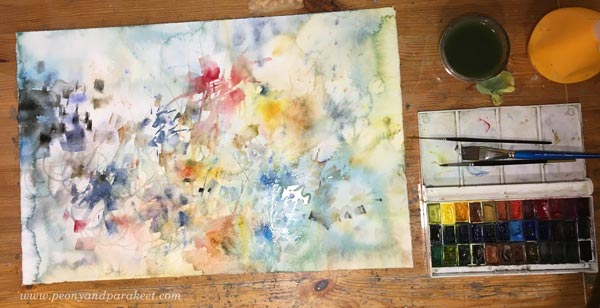
Let’s love this hopefulness in us! It’s a superpower that keeps us not only dreaming but creating too.
Yes, this superpower can look like a bad thing. It can keep us awake too late at night. It can make us buy too many brushes and focus on insignificant details like wallpaper when watching a movie. But our life is never boring or lonely when we get hopeful just by making a mess.
So, make a mess, accept the mess, fall in love with the mess! The more time you spend with the mess, the more likely you will figure it out.
2) Love What Is Secondary
Ideally, I would always know what to do next. Practically, I often have moments when I have no clue. Hope seems lost. I feel fake.
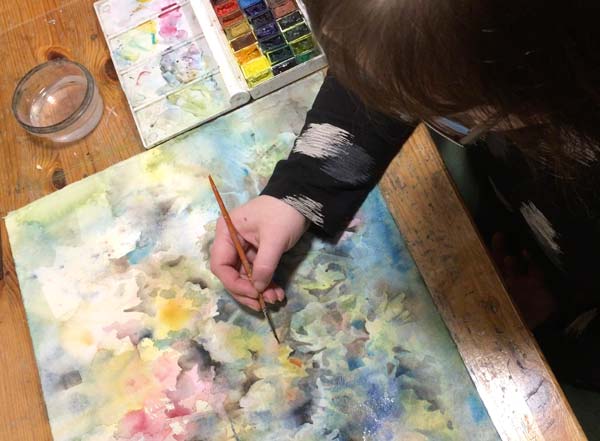
The best cure that I have found is to seek secondary things. They can be tiny spots or pretty accidental shapes, or sometimes I only admire how wet paint glows. It’s like filtering out 95 percent of the mess and seeing a few single things that look fascinating. Lovable.
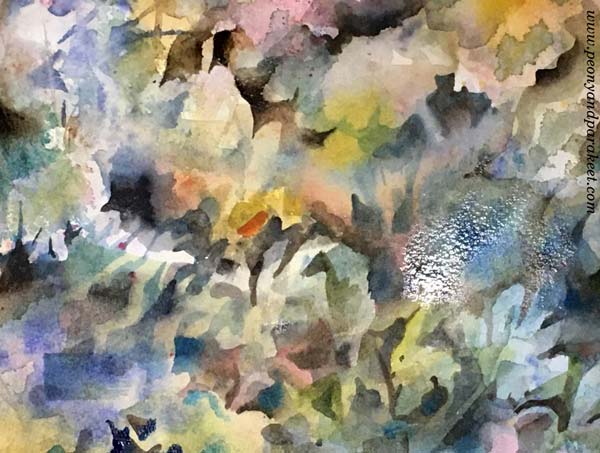
I call these elements secondary because often they are just parts of the background. But by toning down the obvious and bringing up the less apparent, I can change the direction of the painting. What anyone can see is no longer my norm. I have moved on to what only I can see.
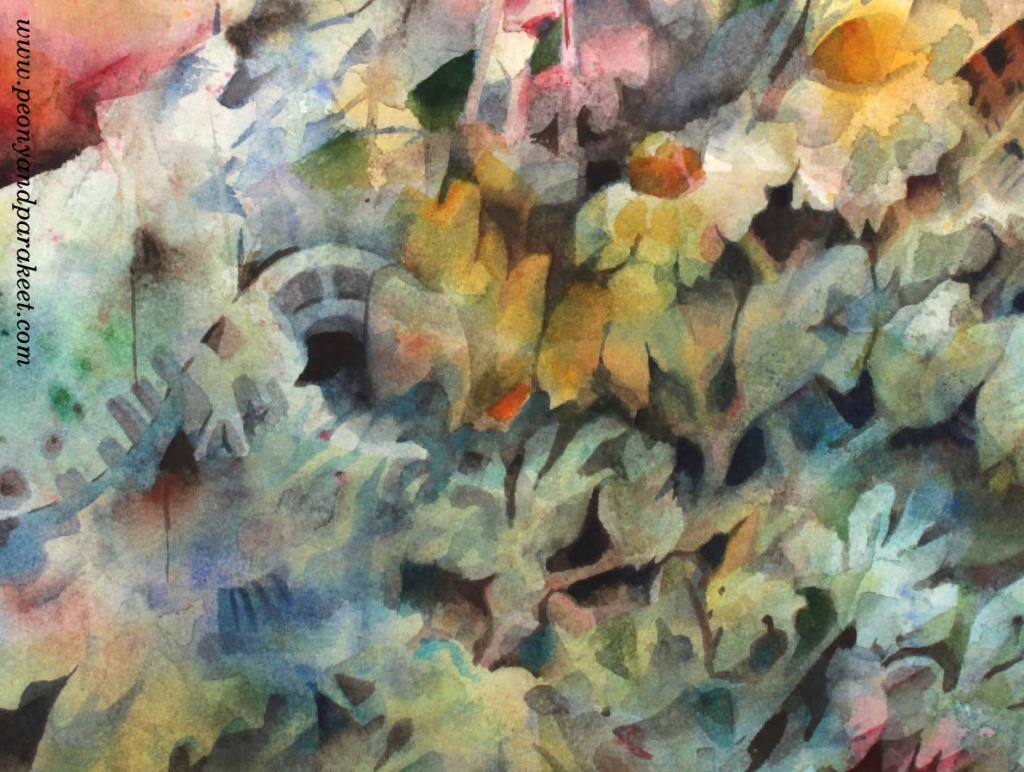
There’s so much more in us than what other people can see. Some skills and characteristics may seem secondary to others, but every one of us is allowed to love and grow them whole-heartedly.
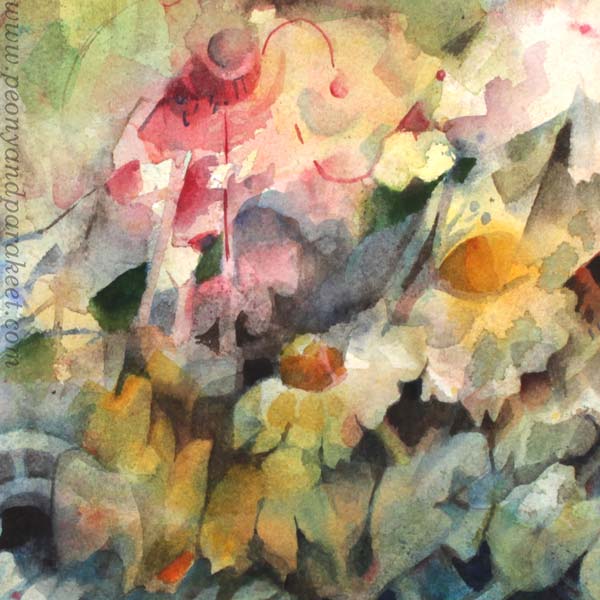
The hierarchy of the outer world doesn’t exist when you are in your inner world. You are free to appreciate discoveries that look secondary to others.
3) No Words, Just Color
It’s not easy to write about love. Love feels more like a combination of changing colors than a sentence with specific words. So when painting, let’s feel the love through color. When dipping your brush first to the paint and then to paper, exhale color. Next, put your face close to the paper and look at the spot so that it fills your view. Inhale. It’s your color. No one can take it from you. Love, love, love.
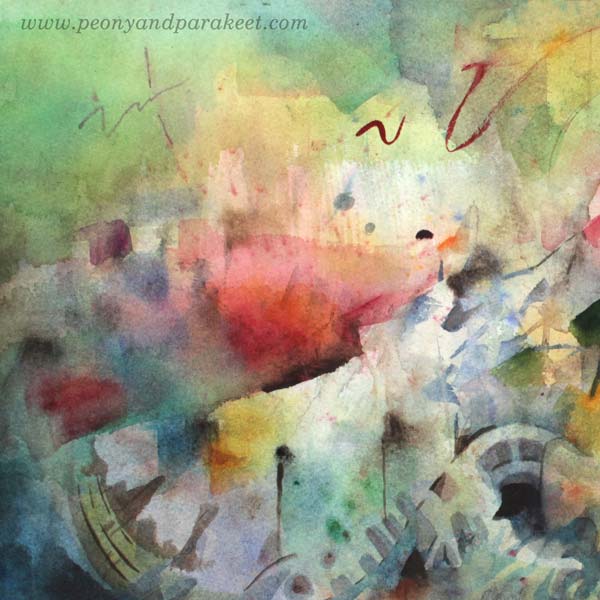
4) Love the Vagueness
Yes, we want to find our style, our visual voice, our true self. But our boat is moving. We are changing, our life is changing, the world is changing. Everything is unsure and insecure. That also makes everything possible.
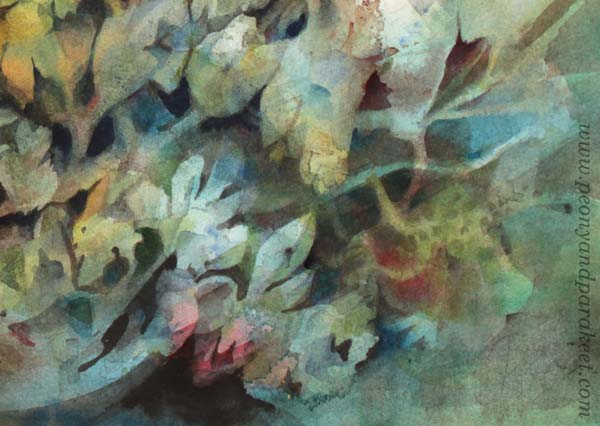
I like to build my paintings so that I leave this vagueness/possibility alive. Maybe there’s a flower, maybe not. Someone sees some triangles only, while others see a rosebud. There can be plenty of interpretations. I am vague, and everything is all right. My painting is a living organism, partly defined by the vague me, partly by the vague you.
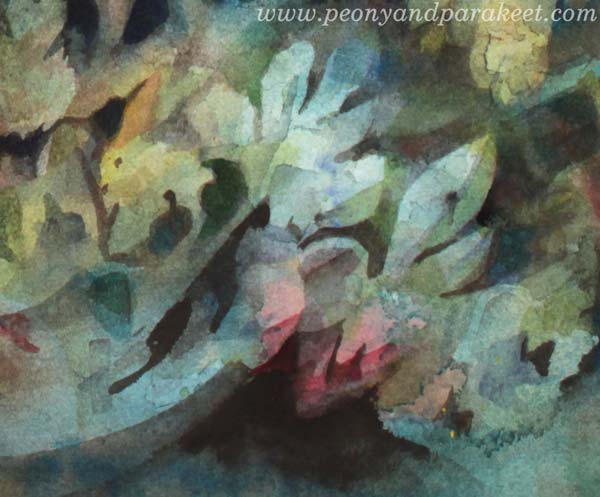
Today we might love the current painting less than tomorrow. And our art may tell a different story after a couple of years. That’s ok.
No, that’s not ok. That’s fabulous!
5) Break It!
I admire brave people. I adore Tracy Chapman singing without a band. Her voice is not faultless, and many of her stories are not relatable to me. But I feel her honesty being present right there when I am listening to her through the headphones.
But for me, it’s often the fear that’s speaking. I hear myself shouting, “NO!” and that’s when I know that the answer should be “YES.” I know I am not alone here. We are often afraid to touch the painting even if we know it lacks something. The risk is real, but worth taking.
In this painting, it would have been so much easier not to paint that dark brown around the white area. But the ice wouldn’t start breaking otherwise.
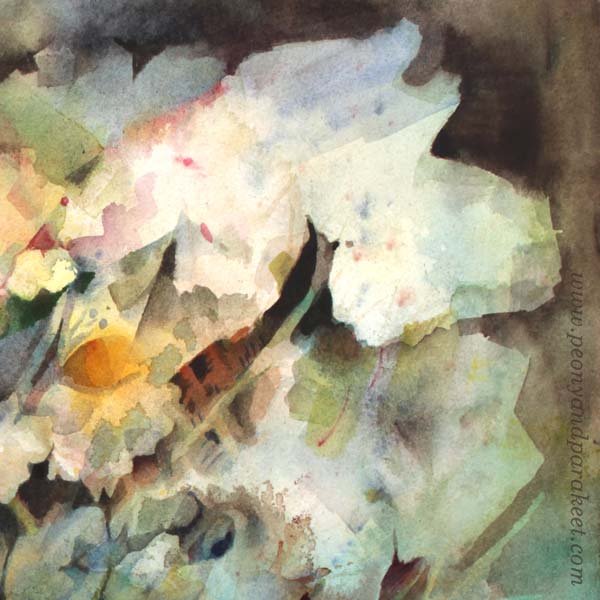
Let’s love this creativity that wants to break what’s almost working. Let’s cherish this wild force that we have in us.
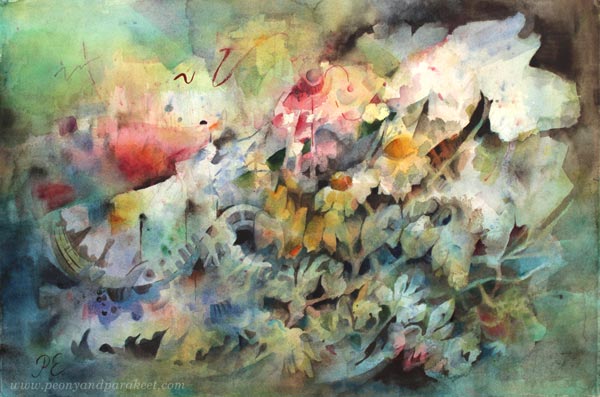
Let’s love who we are when we paint, and when we are surrounded by our paintings!
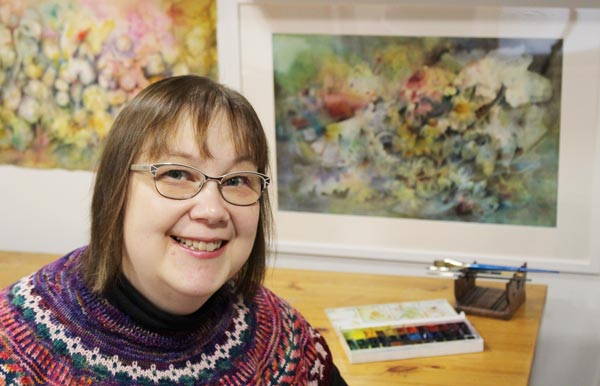
Icebreaker and other watercolor paintings are for sale at paivieerola.com
I currently teach an online watercolor class Magical Forest with themes hope, spirituality, flow, and curiosity. You can still hop along! The class ends at the end of April, so there’s lots of time to catch up! >> Sign up here!
Happy New Year from Paivi’s Art Studio – Greetings in a Video!
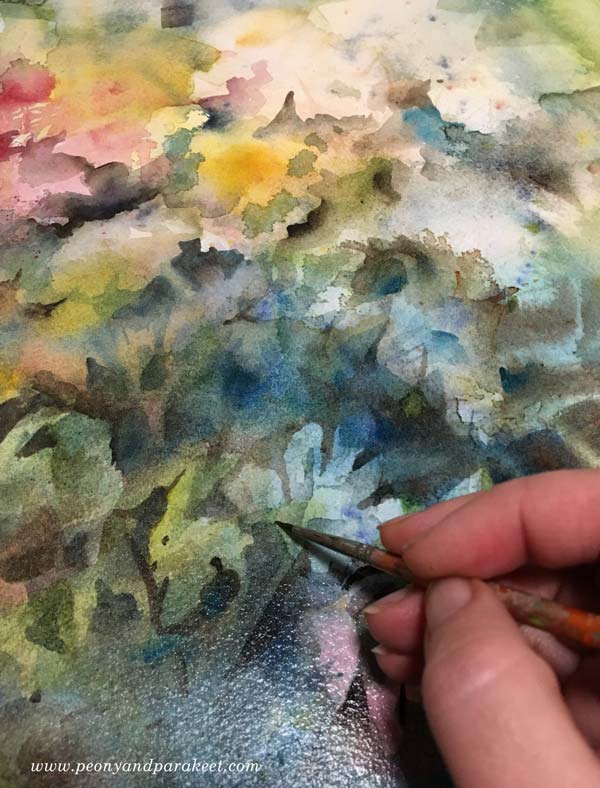
On this last day of the decade, I share some moments from my art studio in Finland. Watch the 1-minute video!
Many times when people look at art, they say admiringly: “How did the artist do that?” They assume that the artist intentionally painted every spot. But often, art is more about seeing what accidental spots to preserve rather than how to intentionally paint them. It’s the nature of art to explore the wild and uncontrollable side of life, and it’s the job of an artist to make it serve the expression.
During the past years, I have tried many art techniques, many approaches, but this the journey that’s for me – to produce and teach art that goes out of control at times, and that has unrealistic and abstract elements as well.
Start the New Year by Painting the Magic
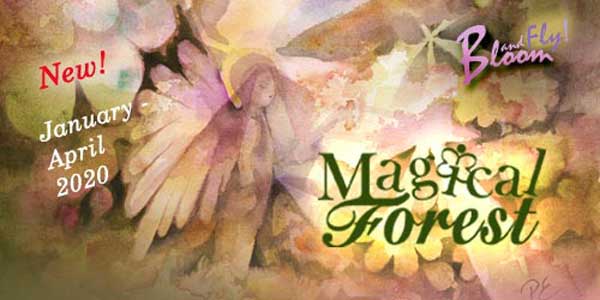
Magical Forest begins on January 1st, 2020! >> Sign up Now!
From Portraits to Stories – How to Dive Deeper in Visual Expression
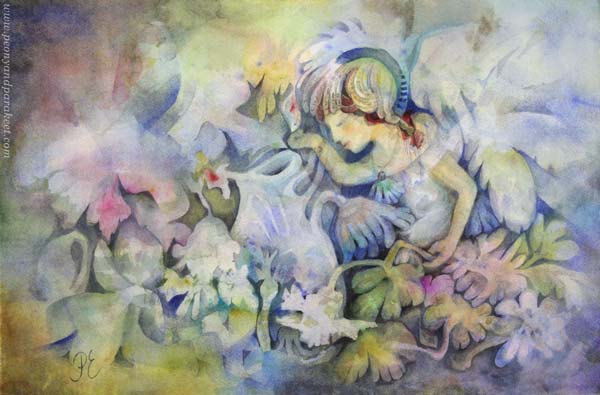
Here’s my latest watercolor painting called “Mirimer”. The name is a combination of “Miracles” and “Meri” (sea in Finnish). I love to invent these names that mix the two languages!
When I started this piece, I had two things in mind: I wanted to use Cobalt Blue Spectral (see the previous blog post about this gorgeous color), and I also wanted to continue my series of watercolor fairies.
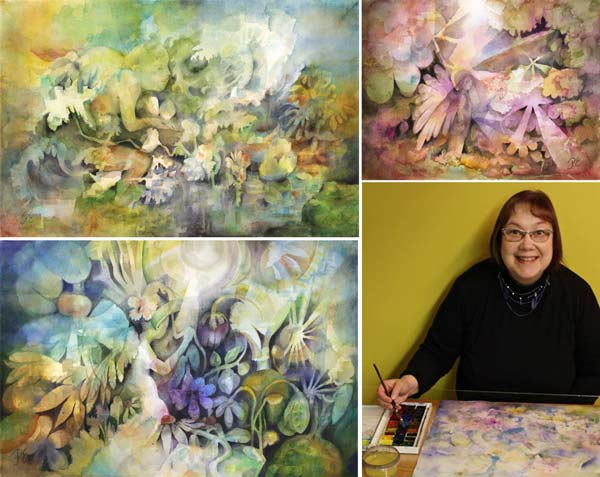
These fairies really speak to me. I feel that I should have started making these story scenes a long time ago and not wasted my time for stiff self-portraits, for example.
Life in Self-Portraits
As a teenager, I stared myself at the mirror and made self-portraits all the time. Any cardboard or piece of paper had my face!
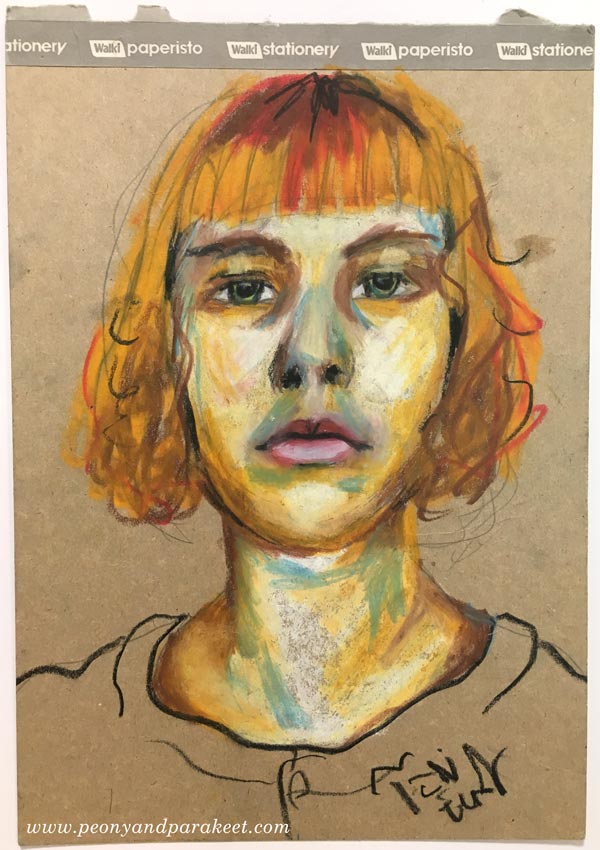
Every time I wondered if this would be a portrait of an artist: “Would my dream come true? Is this piece good or not?”
It has taken tens of years to move from literal self-reflection to expressing my emotions and my inner world. If I could turn back the time, I would peg myself to move from technique back to childish imagination, because there’s always enough time to learn the techniques, and never enough time to deepen the expression.
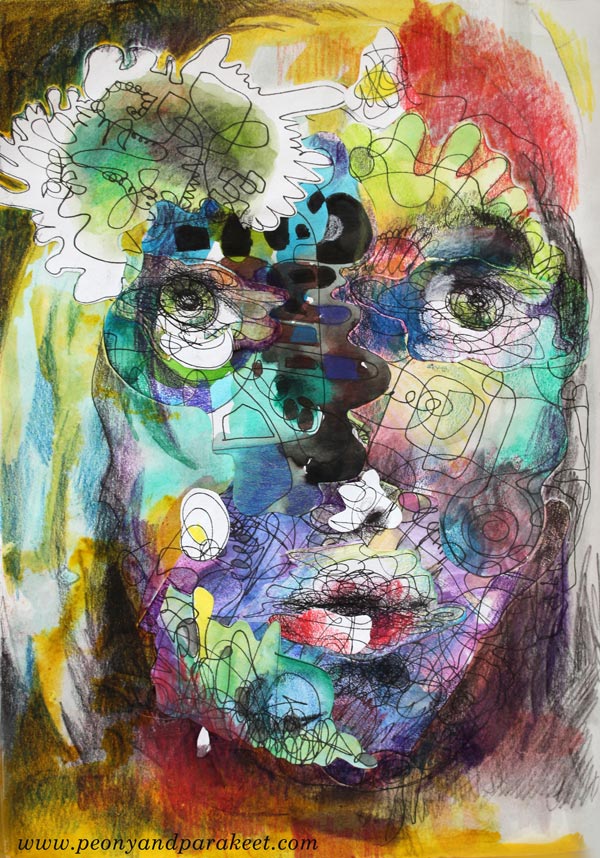
This is a self-portrait from a couple of years ago, and I like that the inner world finally begins to show.
However, for me, the greatest satisfaction of art is not in self-portraits or portraits in general. I want my art to move from portraits to stories, be more dynamic than just staring faces, tell about my experiences, and how I can see them in a new light. I believe that our inner world is full of stories that connect us to other people on a deep level. When I have thought about my artistic style or whether my art is “good” or “bad,” I have often neglected this story-telling aspect.
Mirimer – From a Portrait to a Story
When painting “Mirimer”, there was a magical moment when I heard my mother calling my name. She passed away tens of years ago, and I thought I had forgotten the exact tone in her voice, but the painting brought back the memory. It must have been because of the blue color, her favorite. I realized that I wasn’t painting a portrait of a fairy anymore. I was painting the story of accepting loss as a part of life.
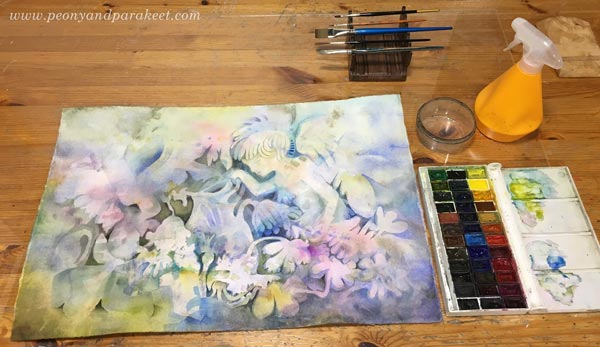
Mirimer became a blue-hooded angel, and the drops of water got some red to indicate that life carries pain that we can’t get to choose.
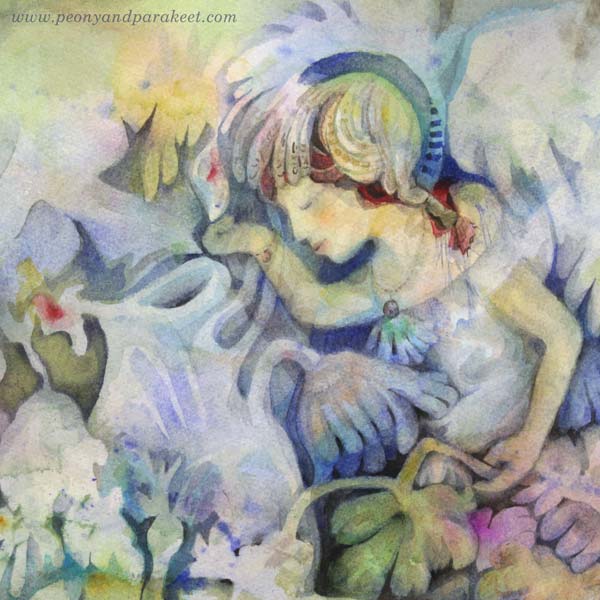
Illustrating Stories by Lucas Cranach
Stories also came to my mind when I went to see Lucas Cranach’s exhibition in the Sinebrychoff Art Museum. Lucas Cranach (The Elder) and her son, Lucan Cranach (The Younger), were not only German master painters in the 16th century, but they also knew how to run an art business. They had a workshop, an illustration studio, which had many employees, a logo, a style that everyone had to follow, and they produced prints too. So even if they lived in the Renaissance, they did what most artists today dream about. They built a visual world around stories that people yearned for.
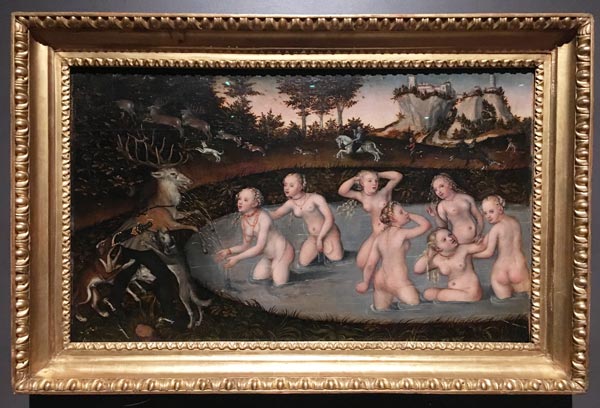
Many of the Caranachs’ stories were from Greek mythology. This painting, my favorite from the exhibition, tells a story about Actaeon turning into a stag when Diana and the nymphs splash water on him. They don’t like him to watch them, and his dogs begin to attack him too!
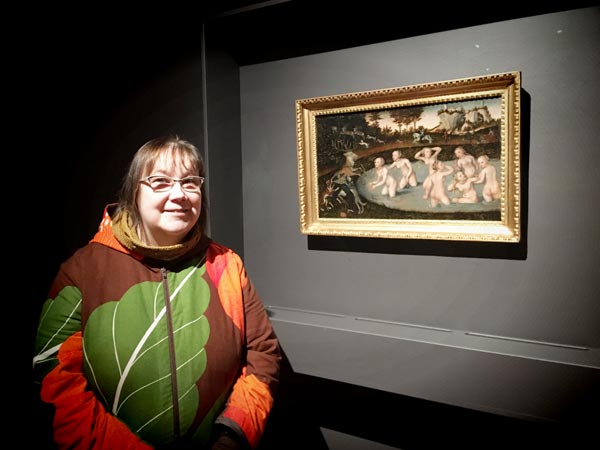
In the painting below, there’s Venus and her child, a little cupid. The cupid has been stealing honey and the bees have bitten him.
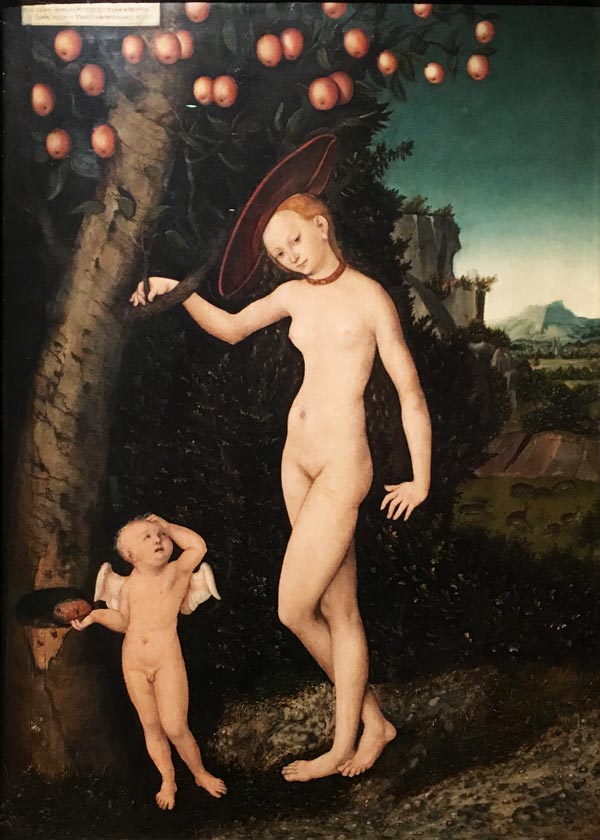
There’s also an old poem, written in Latin on the top corner of the painting too:
As Cupid was stealing honey from the hive
A bee stung the thief on the finger
And so do we seek transitory and dangerous pleasures
That are mixed with sadness and bring us pain
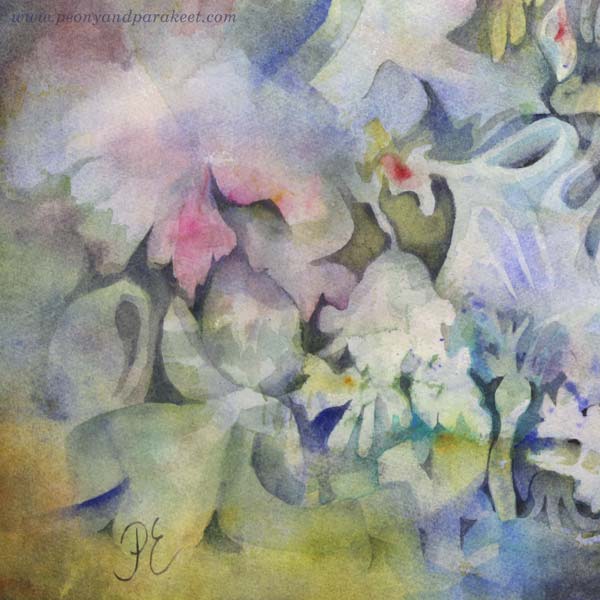
From Portraits to Stories – 5 Tips
- Allow more intuition and imagination into your process: Add splashes and other unexpected elements. Spend time with a color that speaks to you. Instead of actively painting something, spend time discovering and highlighting what already can be seen.
- Grow your skills from faces to body gestures. Learn to process a shape that’s on paper, in your head too so that you can find alternative ways to continue the painting.
- Play with the scale of the elements. We tend to make shapes that are all equal in sizes. But if you want to paint a tiny fairy, for example, you need huge flowers to indicate the small size.
- Let go of strict outlining, and leave room for spots of light and shadows. There’s no story without the atmosphere, and the atmosphere is created by setting the lighting.
- Take time to let the story unfold. Often, the stories have many layers, and the first associations are just the path to deeper ones.
Magical Forest – Discover Stories by Painting!

Paint watercolor fairies and nature’s spirits in their magical surroundings. Enjoy freeing up your expression while exploring flowery woods, shallow ponds, leaf chapels, and adventurous sceneries. Magical Forest begins on January 1st >> Sign up Now!